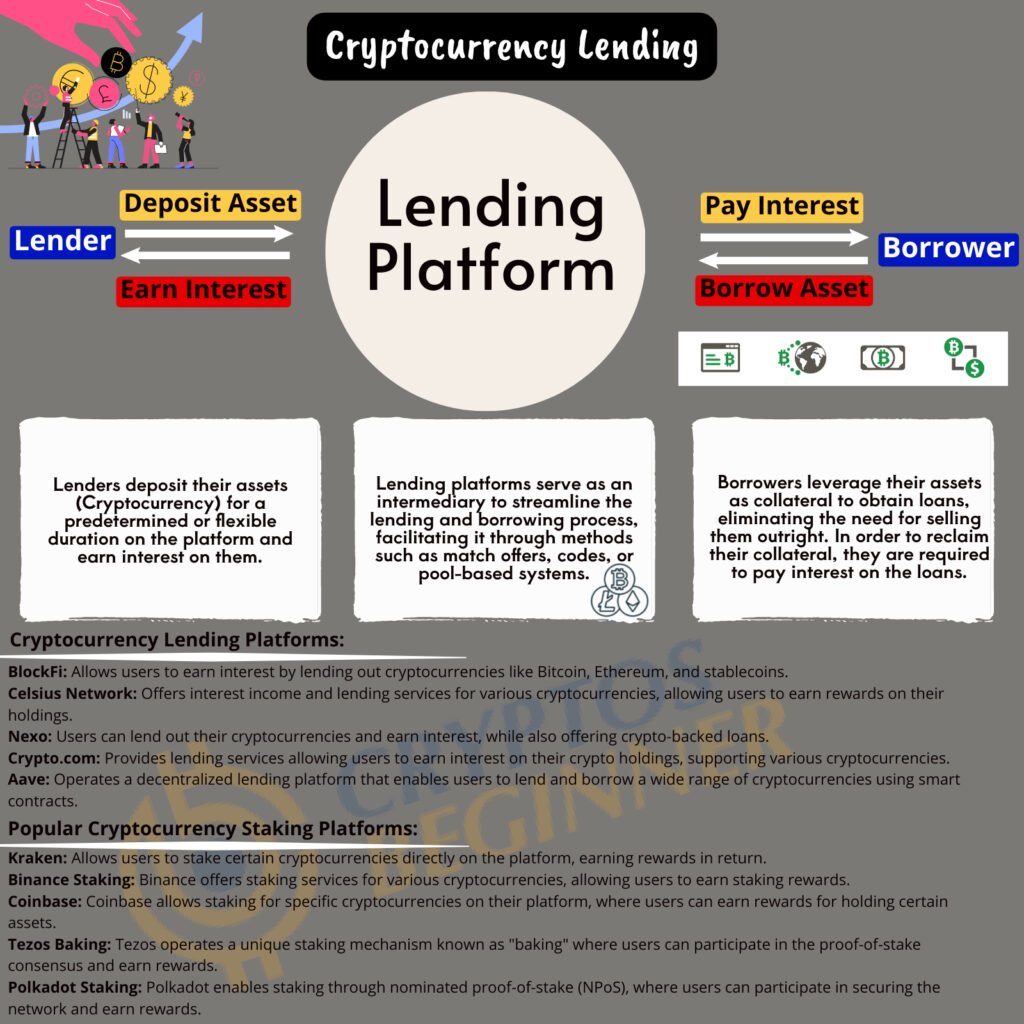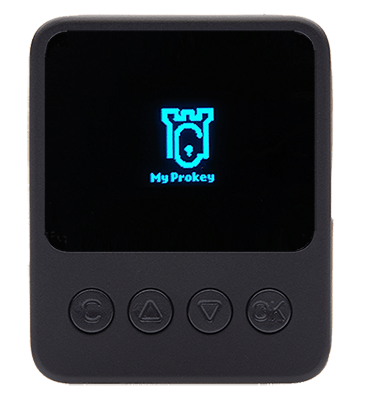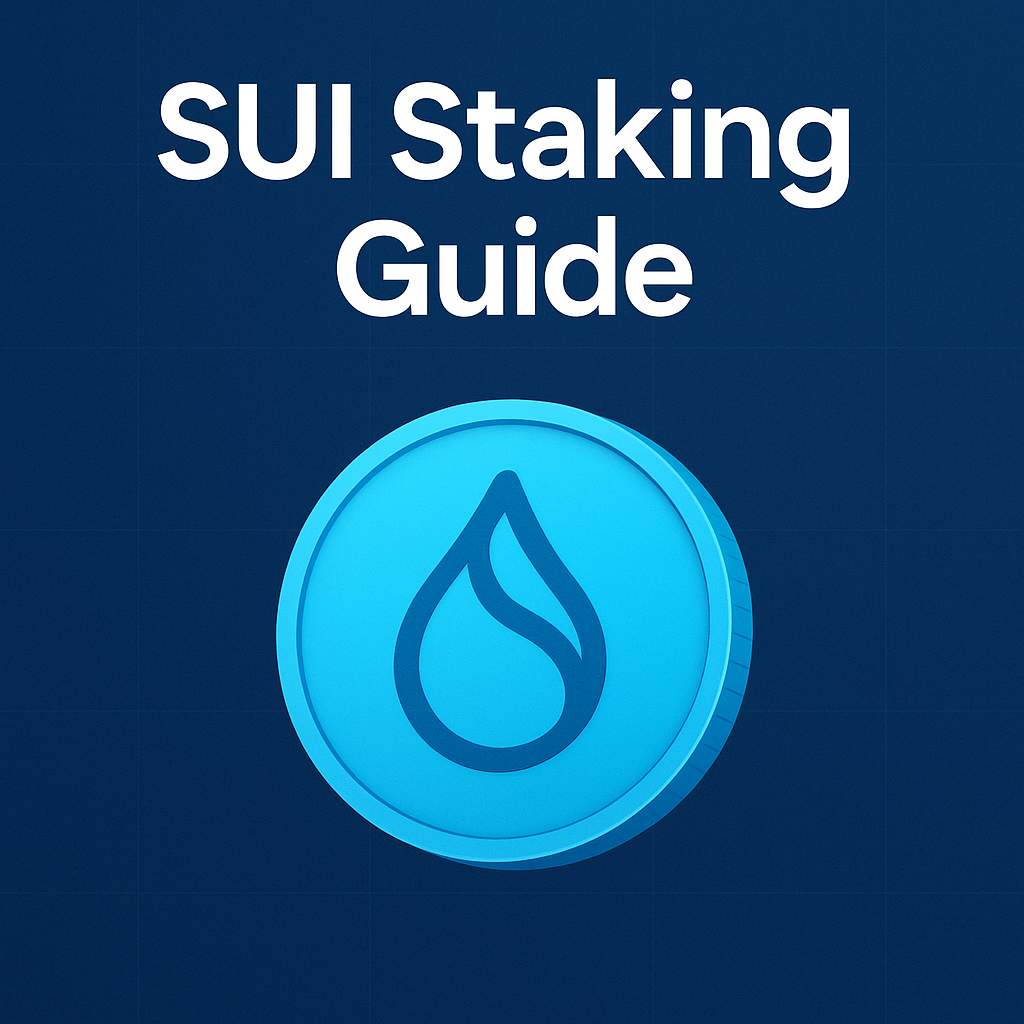Understanding the difference between crypto lending and staking is essential for anyone new to cryptocurrency. Both offer ways to earn passive income, but they operate on different principles, carry different risks, and are shaped by evolving market trends. Here’s a fresh, easy-to-understand guide with the latest statistics and insights.
Crypto Lending: An Overview
Crypto lending lets you lend your cryptocurrency to others through a platform (either centralized or decentralized) in exchange for interest payments. Think of it as a digital version of a bank savings account, but instead of cash, you’re lending crypto assets like Bitcoin, Ethereum, or stablecoins.
How It Works:
- Deposit your crypto on a lending platform.
- The platform matches you with borrowers who provide collateral.
- You earn regular interest payments, often higher than traditional banks.
Types of Platforms:
- Centralized Finance (CeFi): Managed by companies (e.g., Nexo, Ledn).
- Decentralized Finance (DeFi): Run by smart contracts (e.g., Aave, Compound).

Crypto Staking: What is it?
Crypto staking involves locking up your coins to help secure a blockchain network that uses a Proof-of-Stake (PoS) consensus mechanism. In return, you earn rewards, usually paid in the same cryptocurrency.
How It Works:
- Choose a PoS coin (like Ethereum or Solana).
- Lock up your coins on the network or a staking platform.
- Earn rewards for helping validate transactions and secure the network.
Key Differences: Crypto Lending vs. Crypto Staking
Aspect | Crypto Lending | Crypto Staking |
Definition | Lending crypto to others for interest payments | Locking crypto to support network operations and earn rewards |
Eligibility | Any crypto (including Bitcoin, stablecoins) | Only PoS coins (e.g., Ethereum, Solana) |
Returns | Variable, often higher, based on market demand and platform | Relatively stable, tied to network protocol |
Risks | Counterparty risk, platform insolvency, regulatory issues | Network risk, slashing penalties, price volatility |
Liquidity | Often can withdraw anytime, but some platforms have lock-up periods | Usually locked for a set period; liquid staking options exist |
Purpose | Generate yield by lending to others | Support blockchain security and earn rewards |
Fresh Statistics & Market Trends (2024–2025)
While both crypto lending and staking offer potential returns, they come with their own risk profiles.
Crypto Lending:
- The total crypto lending market reached $36.5 billion by the end of 2024, down from a $64.4 billion peak in 2021, due to the collapse of major lenders and a shift toward decentralized platforms.
- Centralized lenders (CeFi) like Tether, Galaxy, and Ledn now control nearly 90% of the $11.2 billion in outstanding CeFi loans, but this sector is shrinking.
- Decentralized lending (DeFi) is booming: open DeFi loans surged 959% from $1.8 billion in late 2022 to $19.1 billion by the end of 2024, spanning 20 apps across 12 blockchains.
Crypto Staking
- As of 2025, 33.8 million ETH (about 27.6% of all Ether) is staked on Ethereum’s PoS network.
- Liquid staking (where you can trade a tokenized version of your staked coins) now holds a 31.1% market share, making staking more flexible and accessible.
- Staking yields on major networks like Ethereum remain below 5%, reflecting increased participation and network maturity.
- The upcoming Pectra upgrade in 2025 will raise validator limits, making staking more scalable and potentially more decentralized.
Real-World Examples (2025)
Crypto Lending:
- Aave V3 (DeFi): The largest decentralized lending market, with $23.6 billion in deposits on Ethereum as of March 2025.
- Tether (CeFi): The single largest centralized lender, dominating the shrinking CeFi market.
Crypto Staking:
- Ethereum: 33.8 million ETH staked, with new upgrades making it easier for more people to participate.
- Liquid Staking Platforms: Lido and Rocket Pool allow users to stake ETH and receive liquid tokens in return, offering more flexibility.
Which Is Better for Beginners?
Crypto Lending is suitable if you want potentially higher returns and are comfortable with more risk and complexity. It’s ideal for those who want to earn on assets that can’t be staked (like Bitcoin or stablecoins).
Crypto Staking is generally safer and more predictable, especially for those holding PoS coins like Ethereum. It’s a good entry point for beginners who want to earn passive income and support blockchain networks.
Fresh Insights for 2025
- The collapse of major CeFi lenders has made DeFi lending more attractive and safer, as risk is spread across many protocols and smart contracts.
- Staking is evolving rapidly, with liquid staking and restaking (staking the same assets across multiple protocols) gaining traction, making it easier for beginners to participate without long lock-up periods.
- Regulatory scrutiny is increasing, especially around lending platforms, so always research and use reputable services.
Crypto Lending vs Crypto Staking: Which One Is Safer?
Crypto lending and staking both offer ways to earn passive income, but they differ in risk, returns, and requirements. In 2025, DeFi lending is recovering strongly, while staking continues to grow steadily, especially on Ethereum. Beginners should weigh their risk tolerance, asset type, and desired flexibility before choosing a path. Always start small, use reputable platforms, and keep learning as the crypto landscape evolves.
How has the dominance of DeFi lending apps over CeFi venues evolved?
The dominance of DeFi lending apps over CeFi venues has shifted dramatically since 2021, with DeFi now firmly in the lead and continuing to expand its market share.
- In the 2020–2021 bull market, DeFi lending apps accounted for just 20–34% of total crypto borrowing, while CeFi platforms were dominant.
- By the end of 2024, DeFi lending’s market share had soared to 63%, nearly doubling its dominance from the previous cycle. When including crypto-collateralized CDP stablecoins, DeFi and related on-chain solutions now control 69% of the entire crypto lending market.
- In absolute terms, DeFi lending open borrows surged from $1.8 billion at the end of 2022 to $19.1 billion by late 2024 959% increase-while CeFi lending dropped 68% from its 2022 peak, with outstanding loans at $11.2 billion by Q4 2024.
This shift is driven by several factors:
- Transparency and Automation: DeFi platforms offer open, on-chain operations, automated terms, and real-time visibility, restoring user trust after major CeFi collapses.
- Resilience: DeFi protocols like Aave and Compound continued to operate through market turmoil, while major CeFi lenders (Celsius, BlockFi, Genesis) went bankrupt, eroding confidence in centralized solutions.
- Innovation: DeFi lending apps have introduced features like cross-chain support, interest rate derivatives, and custodial vaults, attracting a broader user base.
CeFi lending, meanwhile, has become more consolidated, with the top three players (Tether, Galaxy, Ledn) now controlling nearly 89% of the CeFi market, but the sector as a whole has shrunk and shifted focus toward institutional clients.
In summary: DeFi lending has not only overtaken CeFi in market share-projected to hold 60–69% by 2025-but also in user trust, resilience, and innovation, marking a fundamental realignment in the crypto lending landscape.
Frequently Asked Questions:
Do all staking coins work in the same manner?
No, different cryptocurrencies may have varying staking mechanisms and reward distribution methods. It is crucial to research the specific staking process for each coin before committing to it.
How does the interest rate for crypto lending platforms compare to traditional banking rates?
Interest rates on crypto lending platforms are typically higher than traditional banking rates. However, they can vary depending on various factors such as the borrower’s creditworthiness, demand for loans, and market conditions.
Can I stake any amount of coins?
Yes, most staking protocols allow users to stake any amount of cryptocurrency. However, some may have minimum requirements or offer higher rewards for larger stakes. It is essential to research the specific staking requirements for each coin before staking.
Is it possible to lose money while staking or lending cryptocurrencies?
Yes, there is always a risk of losing money when investing in any asset, including cryptocurrencies. Staking and lending both carry their own set of risks, such as market fluctuations and platform hacks. It is crucial to assess your risk tolerance and do thorough research before making any investment decisions.
Is it possible to withdraw my staked coins at any time?
In most cases, staked coins are locked for a specific period and cannot be withdrawn until the staking period is over. Some protocols may allow users to unstake their coins early, but it may come with a penalty or reduced rewards. It is essential to understand the withdrawal terms before staking.
Can I use staking and crypto lending simultaneously?
Yes, it is possible to use both staking and crypto lending simultaneously. Users can stake their coins while also lending them out for additional returns. However, it is crucial to consider the risks involved and diversify your investments accordingly.
Are there any tax implications for staking or lending cryptocurrencies?
The tax implications of staking and lending cryptocurrencies vary depending on the jurisdiction. In some countries, staking rewards may be considered taxable income, while in others, they may be subject to capital gains tax. It is important to consult with a tax professional or research the laws in your area before engaging in staking or lending activities.
Staking and lending are popular ways cryptocurrency holders earn passive income on their assets. However, it is important to understand the risks and do thorough research before participating in these activities.
What is meant by crypto lending price?
Crypto lending prices are subject to various fees, including origination, network, and transaction fees. While some platforms may not impose service fees, it is important to consider that withdrawal and deposit fees may still apply.
Which cryptocurrencies allow staking?
Many cryptocurrencies allow staking, including popular coins such as Ethereum (ETH), Cardano (ADA), and Tezos (XTZ). However, the specific staking mechanisms may vary between different cryptocurrencies. It is important to research and understand the staking process for each coin before participating. Additionally, new projects are constantly emerging in the cryptocurrency space, so it is important to stay updated on potential staking opportunities.
What are the risks of staking and lending?
As with any investment, there are inherent risks associated with staking and lending. These may include volatility in cryptocurrency prices, security breaches or hacks on the platform, and default risk if borrowers fail to repay their loans. It is important to carefully consider these risks before participating in any staking or lending activity and to only invest what you can afford to lose.
How can individuals mitigate these risks?
To mitigate potential risks, it is important for individuals to thoroughly research the platform they are using and diversify their investments. This means not putting all of your funds into one cryptocurrency or lending platform, but rather spreading them out across different options.
References
- “Crypto lending vs staking: What’s the difference?” by Crypterium, 5 May 2021, https://crypterium.com/news/crypto-lending-vs-staking-whats-the-difference/.
- “The differences between crypto lending and staking” by AAX Academy, 25 Feb. 2021,
- https://www.cryptopolitan.com/crypto-lending-market-declines-43/
- https://www.chaincatcher.com/en/article/2177896
- https://www.linkedin.com/pulse/guide-crypto-staking-what-how-works-get-started-muhammad-shahzad
- https://www.datawallet.com/crypto/ethereum-staking-statistics-and-trends







